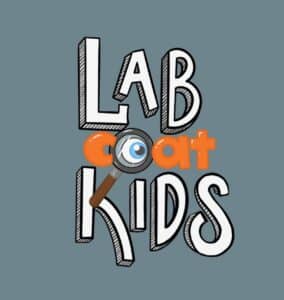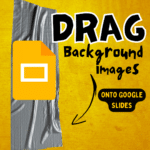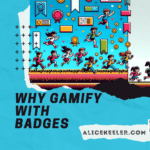By Guest Blogger Melissa Sidebotham, Co-author of the graphic novel The Lab Coat Kids: Monster In The Hall

So Much Fun & Learning Was Happening!
Six years ago, my Co-author, Jennifer Reagan, and I came up with a crazy idea. Jennifer is a former kindergarten teacher and I am a former middle school science and language arts teacher and a current elementary school principal. We wanted to find a way to tap into students’ natural curiosity about the world around them, help them find a way to apply the Scientific Method to real life, and tie it all to the Next Generation Science Standards in a way where students were having so much fun, they didn’t realize they were learning. Thus, The Lab Coat Kids were created. Our characters are neighborhood friends that solve mysteries using the Scientific Method.
It started off as a chapter book, but soon we realized that we could reach more students if we turned it into a graphic novel. Our first book, The Lab Coat Kids: Monster In the Hall, comes out this fall, but you can get in on the fun before then by using some of the tricks we learned along the way.
Not all students best express their knowledge of a concept through writing or best learn a concept through strictly reading about it. Some students like to demonstrate their learning through pictures, some through demonstration, and others still through writing. All students are more engaged if you tie the learning to a real world problem, something that applies directly to them.
Tools for Educators for Visual Problem Solving
You can do this with a science or engineering concept, a conflict in a story plot, or a problem presented in history, a social issue (think anti-bias or anti-racism work), or friendship conflicts. The possibilities, age ranges, and subjects are endless. You can take the basic premise of solving a mystery (using the Scientific Method like The Lab Coat Kids or another problem solving method) and have students use a free comic template like Canva, StoryboardThat, or Pixton. You can even break them up into in-person or virtual groups to tackle each part of the Scientific Method or whatever problem solving model you are using. Then put them together in a medium like Google Slides to create their own comic strip or graphic novelette. If your students prefer live action, you can use FlipGrid for a simple version, or WeVideo if your students are interested in layering narration, music, and video for a more polished production.
There is something magical about tapping into that visual format that allows all of your students to more fully express understanding of a concept, no matter what it is. You will end up with a product that demonstrates understanding, is high on the engagement scale, and is versatile whether you are fully in-person, working on a hybrid model, or are again fully in distance learning.
Sneak Peak Graphic Illustrations for The Lab Coat Kids!
I hope you will join us on the journey of The Lab Coat Kids and that it inspires you and your students to solve any mystery that presents itself. Check out these sketches from our fabulous illustrator, Noella Bickel that are about to enter the final stages for the art and lettering of our graphic novel.
You can follow us on Twitter @thelabcoatkids or Instagram @thelabcoatkids or on the website TheLabCoatKids.com. You can follow Melissa Sidebotham on Twitter @MelSideB or Instagram @inthebuildingwithmrss.







